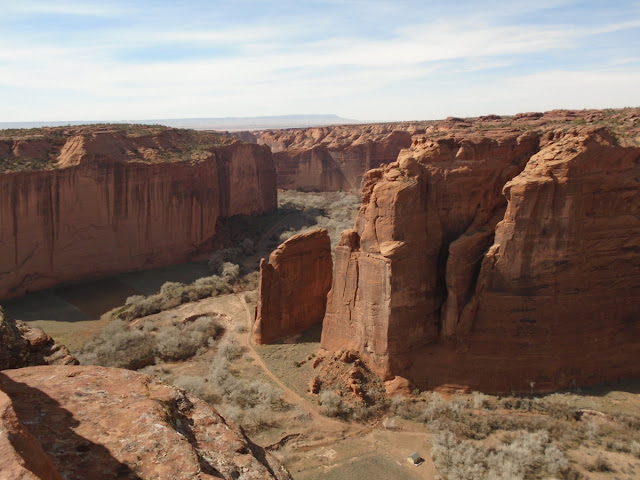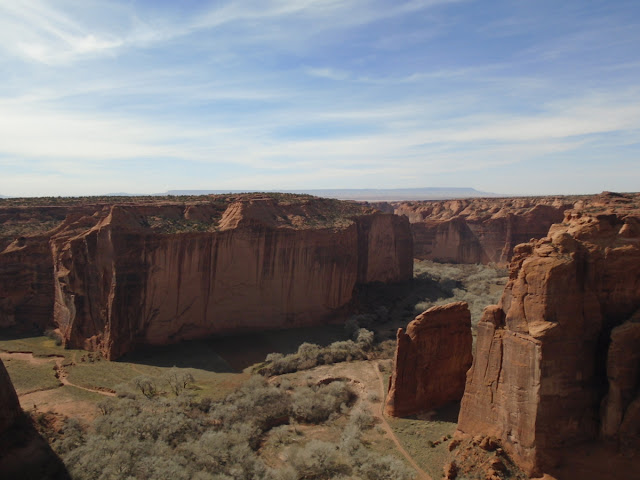It's Monday morning, the beginning of our last week of this journey, and I'm sitting at the desk of our hotel room here in Moab, Utah, trying to get a start on summarizing the experiences of the last two days. I'm stalling, wondering why. Maybe it is the fact that I read about changing weather - indeed, it is cloudy this morning, for the first time in quite a while -, have been thinking about the way home (not a good idea to do this prematurely, even if, as Rainer Maria Rilke advises in a poem, you should be 'ahead of all parting, as though it were already behind you'). It might also be due to the impressions from the last two days, the immersion in a landscape so magnificent that it is hard to find words to describe it. Nevertheless, I will try and let the photos do much of the talking.
Two days ago we visited Canyon de Chelly (pronounced d'SHAY) National Monument, whose nearly 84,000 acres lie within the Navajo Reservation and are administered by the National Park Service. It is the home of the Diné, the Navajo people, who have lived here for the past 400 years, the latest in a long line of settlers which started in the archaic period, 2500 – 200 BCE, followed by the Basketmaker people from 200 to 750 CE, the Pueblo from 750 to 1300 and the Hopi, 1300 – 1600, each with their own rich history.The Diné brought domesticated sheep and goats and planted crops and orchards on the canyon floor, and they farm in the canyon to this day.
We had decided on the South Rim Drive and drove all the way to the furthest point, Spider Rock Overlook. This is one of the most remarkable features of the canyon, an 800' (240m) high sandstone spire that rises from the canyon floor. I can only imagine what it must be like to stand at its foot and look up.
There was very little traffic in the park that day, no crowds at the different view points, which was a nice surprise. There was no rush to make room for somebody else to look into the canyon, and I was happy to let the magic of this gorgeous place sink in.
At Junction and Tsegi Overlooks we had a great view of the canyon floor, saw tilled fields and pastures, corrals and the cottonwood trees that line the banks of the wash, even watched two riders slowly make their way along the trail.
In one of the parking lots a Navajo woman named Darlene Sam had spread out jewellery and some pottery on the hood of her car. She told us that she lived down in the canyon, but because tourists can no longer walk down she is now hiking up and offers her crafts here. I bought a vase depicting symbols from Navajo history and mythology. Darlene was taught by her grandmother and now teaches her own daughter, who, at twelve, has made the beaded bracelets that were part of the display. I learned how the materials found in and on top of the canyon are used in jewellery, medicine and spiritual ceremonies. Juniper berries are used in many of the bracelets and necklaces, in fact, all parts of this plant are highly valued, the branches used to cleanse and purify in ceremonies.
The park, or rather the visitor centre, closes at five, and by that time we had seen as much as we could have hoped for and were on our way north again, to spend the night in Blanding, Utah, a reasonable distance for the drive to Canyonland NP the next day. Once again we changed time zones and are now back in our home time zone, MST. Canyon de Chelly, while still in Arizona, is on Utah time.











No comments:
Post a Comment